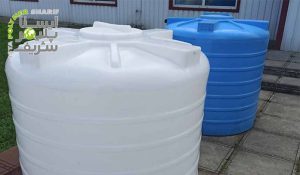In this article, we aim to review safety tips for better use of storage tanks. Today, storage tanks are of great importance, and therefore, depending on the type of tank, very important considerations must be taken into account for their maintenance. Storage tanks should be maintained according to the material they are made of, the fluid they store, and the maintenance methods provided by the manufacturer. Water tanks, corrosive fluid storage tanks, and oil condensate storage tanks each have different maintenance methods.
Safety tips for tanks containing acids and alkalis are more sensitive compared to other storage tanks.
Drinking water storage tanks are also of great importance due to their use for drinking water. Galvanized drinking water tanks are prone to corrosion over time. The issue of corrosion is higher in cold galvanized water tanks with welding seams. Composite drinking water tanks also have high sensitivity for maintenance. These tanks can become susceptible to corrosion over time and, due to their high fragility, can cause serious damage to the infrastructure.
Regular maintenance and cleaning of drinking water tanks are very sensitive matters. The placement and leveling of drinking water tanks are very important. In general, and depending on the type of water tank, periodic (every 6 months) cleaning of the tanks should be carried out. This interval may increase or decrease for drinking water tanks depending on the type of water used. High-volume tank cleaning involves disinfection. This disinfection should be carried out using antibacterial solutions. Meanwhile, the cleaning of non-drinking water storage tanks requires less sensitivity. High-pressure water jets are sufficient for cleaning these tanks.
Many safety considerations must be taken into account for corrosive fluid storage tanks. These considerations include the placement of the storage tanks’ field zone for acids or alkalis. These locations have various specifications, including preventing the flow of large volumes of corrosive fluids into the path. Given the volume of these tanks, their maintenance conditions are highly sensitive.






